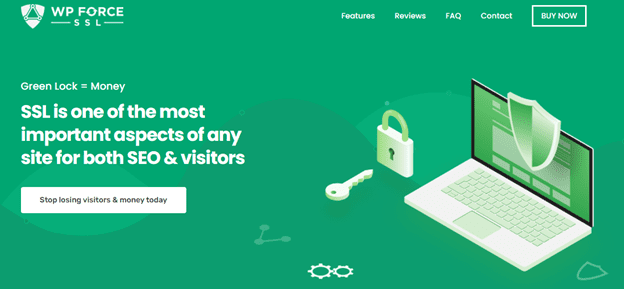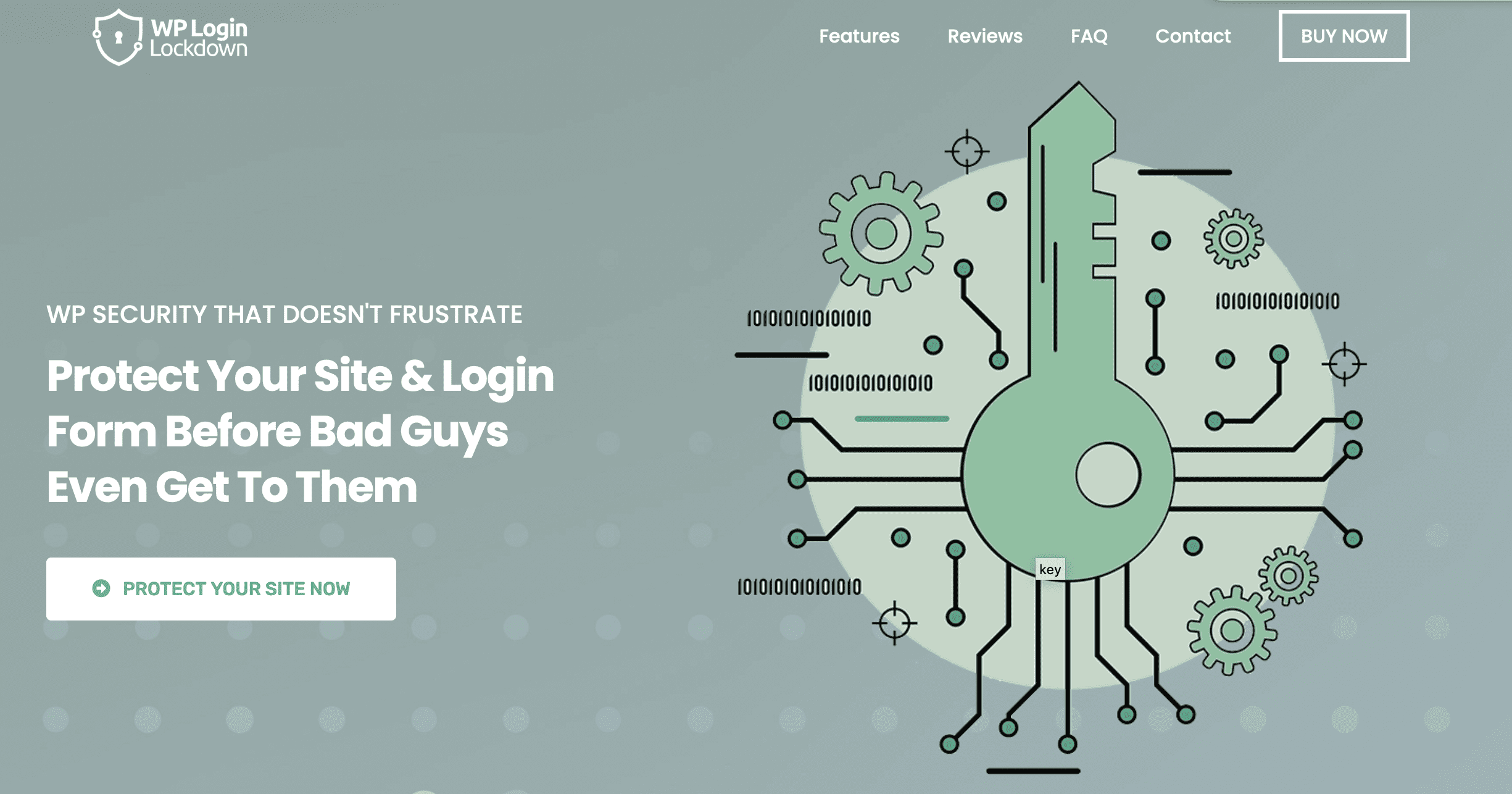Your website is the first contact with your business for many of your customers. It presents who you are, what you do, and how your customers can use your product/services.
Having a well-designed website with optimized functionality helps your audience to find their way through the site map and find what they were looking for in a few clicks.
However, there are many threats to the security of your WordPress website, and different scams can easily interfere with the performance of WP.
Still, there are some easy actions you can do to keep your website safe from threats and security breaches. Here are our best tips for protecting your WordPress website.
Use HTTPS/SSL
Simply explained, an SSL, or Secure Sockets Layer, is a symbol that frequently indicates that your Internet connection is protected and secure. Its principal responsibility is to protect any sensitive data transferred between two systems, guarding against access by hackers, thieves, or other cybercriminals who may be after sensitive personal data like credit card numbers or identities.
You need a low priced vendor who can offer after sales support along with cheap prices on SSL certificates. We here suggest one of the cheapest SSL providers: CheapSSLShop – a well known SSL reseller in the SSL industry. A site owner can find many types of SSL certificates over here at the lowest price. You will get modern encryption standards with each certificate you purchase.
It guarantees that all information transmitted between users and websites is unreadable. Similar to the encryption used by VPNs. However, it operates by rearranging data rather than IP addresses. Data in transit is protected against misuse and hostile attacks via encryption.

WP Force SSL is among the top SLL plugins for WordPress websites. WP Force SSL’s main objective is to help customers switch from insecure HTTP traffic to secure HTTPS.
With WP Force SSL, you can also fix problems and stop them from happening in the future without ever touching a line of code. It only requires a quick installation and activation; the plugin will take care of the rest, including making sure an SSL is enabled.
And don’t worry if you’re concerned about the condition, or more precisely, the quality, of your SSL certificate. Any SSL certificate may be easily navigated, scanned, fixed, and managed with the help of this plugin.
Use a Login Protection Plugin

WP Login Lockdown is a WordPress plugin that adds an extra layer of security to your WordPress login page. It helps protect your site from brute force attacks by limiting the number of login attempts from a specific IP address within a specified time period. If someone exceeds the allowed number of failed login attempts, the plugin temporarily blocks their IP address, preventing further unauthorized login attempts.
The plugin offers various configuration options, allowing you to customize the security settings based on your needs. You can set the maximum number of login attempts, the duration of the lockout period, and even exclude specific IP addresses from being locked out. These settings provide flexibility in balancing security and user convenience.
By using WP Login Lockdown, you can significantly reduce the risk of unauthorized access to your WordPress site. It is a proactive security measure that helps protect your site’s content and user data. The plugin is user-friendly, making it accessible to both technical and non-technical users. Installing and configuring WP Login Lockdown is a simple process, ensuring that you can enhance the security of your WordPress login page without much hassle.
Overall, WP Login Lockdown is an effective tool for strengthening the security of your WordPress site by safeguarding the login page against brute force attacks. It is highly recommended for anyone running a WordPress site to consider implementing this plugin to enhance their site’s security posture.
Build a Strong Website
![]()
The most important tip for protecting your website is to build a strong site in the first place. Investing in a security protocol HTTPS:// is the first step, but when it comes to WordPress, there are security plugins you should pay attention to.
WordPress remains one of the best website builders. One of the reasons for this is that the WordPress software itself, as well as the important plugins made for WP websites, are being updated and improved regularly.
Plugins such as Wordfence Security, Security Ninja, or Jetpack will scan your site daily and report any issues they might find. They will also notify you when it is time to update the plugins and WP itself.
Use A Proxy Server
A proxy server can play an important role in protecting your website from various cyber threats, especially if you use private residential proxies. Here are a few ways that proxies can help:
- DDoS protection: Proxies can be used to absorb the traffic generated by a Distributed Denial of Service (DDoS) attack, preventing it from reaching your server and causing a disruption of service.
- Firewall protection: Proxies can be configured to act as a firewall, blocking unwanted traffic and preventing unauthorized access to your website.
- SSL termination: Proxies can handle the SSL/TLS termination, encrypting and decrypting the traffic between the client and the server. This can improve the security and performance of your website.
- Load balancing: Proxies can be used to distribute the traffic among multiple servers, ensuring that your website remains available and responsive even under heavy load.
- Geo-blocking: Proxies can be used to block traffic from specific geographic locations, preventing unwanted visitors from accessing your website.
- Caching: Proxies can cache frequently-requested content, reducing the load on your server and improving the performance of your website.
In summary, proxies can protect your website by absorbing DDoS traffic, acting as a firewall, handling SSL/TLS termination, distributing traffic via load balancing, blocking traffic from unwanted geographic locations, and caching frequently-requested content; all these features can improve the security and performance of your website.
Perform Regular Checkups
In order to keep a professional website running, your IT team should analyze the backend on a regular basis. Checking for malware and viruses that might have slowed down your site is the first step to diagnosing what can be improved within your WordPress.
Sometimes the site is running slowly just because of the plugins you forgot to update, or it is overwhelmed with the amount of software that is running behind the site.
That’s why plugins such as WP Reset come useful to determine which features you really need on your site and remove the excess in order to speed the site up.
Hire Professional Developers

Even though so many useful plugins have already been developed, sometimes you need to brainstorm your own solutions. You might not have the resources to have an in-house IT development team, or you only need a one-time hire for the website.
A good option to develop your own software is to outsource external teams. Outsourcing software development from Argentina, Ukraine, or the Philippines can be an affordable option for your business, and there are many professionals who can deliver exactly what you need.
When it comes to creating IT solutions, quality should be your first and main priority. Sometimes the cheapest solutions can result in more technical challenges than they will improve the functionalities of your site.
Do your research, ask for recommendations, and choose real professionals who can prove value to your IT investments.
Keep Your Site Updated
As we have mentioned above, updates are super important for the security of any website. Any software, including WordPress and its plugins, can be a liability to your business if it is out of date.
Cybercrime is developing quickly, and new dangerous scams, viruses, and malicious software are finding cracks in websites every day. But just like the scams are being updated, the WordPress developers are finding ways to respond to these threats, and they are updating the plugins regularly.
Not having the latest updates on your website can not only be potentially dangerous and attract scams, but it also slows your site functionalities down. To wrap up, day-to-day updates are beneficial for site security and user experience.
Backup, Backup, Backup

Even if you do your best to keep your WordPress website safe, you can still fall into the hands of a well-designed malware that can crack your code. Malware that attacks websites usually takes over the admin role of the WordPress site, but its main goal is to take over your emails.
When your email accounts are being attacked through your WordPress website, the usual purpose is to send spam emails from your business account and to close you out completely. But, sometimes, the emails are being read to steal your business information, or they can be deleted completely.
The content on your WordPress site can also be altered or deleted by the malware or hacker. Once your IT team deals with this security breach, you will need to recover your data and get back your site and email history.
Backing up your site online and offline is thus one of the key security protocols you should perform regularly. Your team can either do it on their own, or you can use specialized software such as DuoCircle to help you with email security overall.
To Conclude
Security of data is the priority for most businesses that are using online presentations and services. Websites are an easy way for hackers and scams to abuse your information and steal data stored by your company.
This includes, but is not limited to, data about your audience, customers, and payment information. This is why investing in your website security is a must and shouldn’t be neglected.
If you don’t have an in-house IT team in charge of web safety, WordPress offers good options for reliable security software and strong firewalls that are your first line of defense from malicious attacks.
However, the two most important actions you must take to keep your website running smoothly are to always keep WordPress and plugins updated and to backup your data all the time.
These key tips are essential to prevent you from having internal technical liabilities, which are still the most common way for scams and hackers to invade your website.